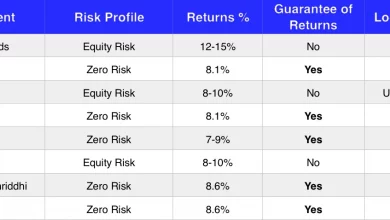REITs and How To Invest in India

Table of contents
What are REITs?
Real Estate Investment Trusts, also known as REITs, are investment instruments in the form of securities that can be purchased by investors from companies that issue REIT. These securities are similar to share certificates that reflect ownership of a particular company. REIT have the advantage of being an alternative source of financing with special tax treatment with fairly high dividends. The structure of REITs is similar to mutual funds but the placement of assets is in property instruments such as commercial properties, ranging from office buildings and apartments to warehouses, hospitals, shopping centers, hotels which can also be involved in real estate financing especially in India.
Like a stocks, REIT can be offered/traded on the stock exchanges. In addition, REIT provide a liquid nature because they are in the form of shares for the property sector. Buying property as investment is one of the most popular ways to invest. For many people, land or property is considered a very profitable investment. This is based on property needs that continue to increase, which of course will also increase the value of the property itself.
Although considered relatively safe and profitable, investment in property generally requires substantial funding. This then becomes an obstacle why this property investment cannot be done by everyone. But over time, we can now invest in the property sector with very small capital.
Of the many property products on the market, one of the most interesting is rental property products with high dividends. However, the problem of limited capital and lack of experience, makes most people reluctant to try to invest in it in India.
As a solution, there are actually several ways to invest in property that do not require you to buy a whole unit of property in India. Two of them are through a real estate investment trust or REIT and a method of buying property that is currently on the rise: partial property ownership or fractional ownership. Partial ownership product contains the collective funds of a number of individuals who are invested in one investment portfolio in the form of property assets. Anyone can buy REIT shares as long as the product is listed on the stock exchange. However, keep in mind, when you invest your funds in REIT products, you will not know which property projects you are “buying”.
Investing in partial property ownership for capital gains is different from the method of buying property through the fractional ownership model. In the fractional ownership method, you can freely choose the property you like through online-based media by only spending funds to be able to buy shares or ownership in the property product. In short, you choose the property product you are interested in and invest some funds there according to your ability, then wait for the funds to be collected from other investors according to the market price of the property.
Once it is done, you are officially one of the owners of the property such as REIT investment India you want. Thus, with only minimal REIT funds in India, you also have the opportunity to buy premium property products in the capital city or other embassy REIT. Not to mention the capital appreciation that will follow later.
Benefits of REITs Investment
The property business can be said to be a business that almost never dies. Many people then try to do business in this field, arguing that property is considered safer and generates large profits in the long run. Meanwhile, others tend to prefer to invest by buying and then renting it out, thus making it an additional source of income for long term investment. Here are some benefits you can achieve through REIT investment in India or in the other countries.
1. Tax-free
REIT are exempt from taxation at the corporate level, provided that 90 per cent of the taxable income is distributed to shareholders within 3 months before the end of the financial year. The tax exemption helps avoid double taxation (both at the corporate and individual level), so unit holders in India can enjoy better DPU (Distribution Per Unit).
2. Low Leverage Risk
Because REIT are designed to give small retail investors access to real estate investments, governments have an obligation to protect these investors. To manage leverage risk, REITs are bound by conservative leverage limits (leverage level is limited to 50%, last updated on April 16, 2020). This ensures adequate debt service coverage and prevents over-leveraging thereby reducing the risk of the REIT violating its debt covenants.
3. High Transparency Level
REIT listed on regulated stock exchanges such as SGX (Singapore Stock Exchange) are subject to high transparency requirements. Investors can easily access and carefully examine the latest financial information, material business developments and the risks of the listed REITs. Markets with high REIT penetration tend to be highly transparent due to reporting obligations.
4. Ease of Liquidity
Compared to physical real estate, the time and effort required to buy and sell REIT shares is much quicker and easier because REIT are publicly traded like stocks. On the other hand, buying and selling physical real estate requires either a price negotiation process or the buyer’s process of obtaining a mortgage from the bank.
5. Affordability
The barrier to entry for REIT investments is lower compared to physical real estate because you own a small portion of the REIT portfolio. You can adjust the amount of capital you want to invest depending on your financial situation. REITs provide an affordable alternative to investing in real estate. Therefore you don’t have to worry about high upfront payments and excessive leverage, as you would when buying physical real estate.
Disadvantages of REITs Investment
Investment in the form of rental property provides continuous income for investors. In addition, real estate investing helps investors protect themselves from inflation. However, this investment also has some drawbacks in years. First, real estate is highly illiquid, as the process of selling a property may take a long time, not to mention the initial capital is very large. Secondly, investors should provide reserve funds to pay for repair costs that can occur suddenly, especially in condo type buildings, or at least for routine maintenance costs.
Other disadvantages you should face in the future is, over time, you will also have to make improvements to your property if you want to charge a higher rent or if you want to sell it. If you want to sell a property, you also have to pay a commission. Sales commission fees usually reach 5% to 6% of the selling price. As with the stock market, there are actually many external factors that you cannot control when investing in real estate. For example, there could be a new landlord who comes to your area, resulting in competition for rents, or turmoil in the real estate market. All of this can cause estate properties rental prices to decrease.
REIT asset class type
1. Equity REIT: This type is the one we are more familiar with. Equity REIT consist of types of income-generating properties such as hotels, office space or housing. All REITs in Singapore are equity REITs. We will explore more about equity REIT (more specifically S-REITs) in the next section.
2. Mortgage REITs: As the name suggests, this type of REIT holds mortgages in its portfolio. Mortgage REITs (M-REITs) benefit from the interest collected through mortgage loans. Despite the lesser management costs, the M-REIT does not hold any tangible assets. They are very sensitive to interest rate fluctuations and credit risk. (No mortgage REIT found in Singapore).
3. Hybrid REIT: This REIT class combines the investment strategy of equity REIT and mortgage REIT. Income is generated through rent as well as interest collected from mortgage payments.
REITs in India
JLL, a global real estate service, reported that the assets of real estate investment trust India is worth Rs 286,000 crore. It means that the assets are suitable to be listed under REIT. As for your information, currently there are three REITs listed in India that are traded on bourses. They are the Mindspace Business Parks, Embassy Office Parks, and the recently listed in Brookfield India Real Estate Trust. In the same report, India’s current office markets across seven major cities have a potential space of 284 million sq ft that could be securitized with an estimated value of Rs 262,800 crore.
In the same report, the number of buyers and sellers will broaden significantly with the listing of more REIT stocks India. It makes further increasing market liquidity and yield compression and the incentive to securitize property assets. Bengaluru which is famous for India’s Silicon Valley is now aimed as India’s largest source for potential assets available for securitization, accounting for 31% or 88 million sq ft of REIT worthy assets, valued at Rs 81,468 crore. It is a huge chance for Indian to aim for this type of investment.



